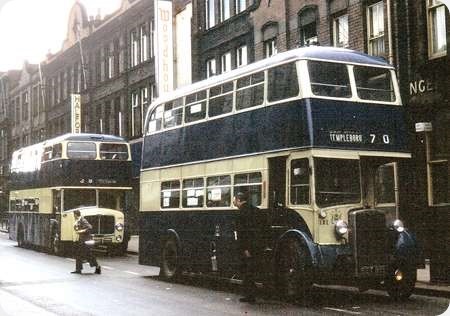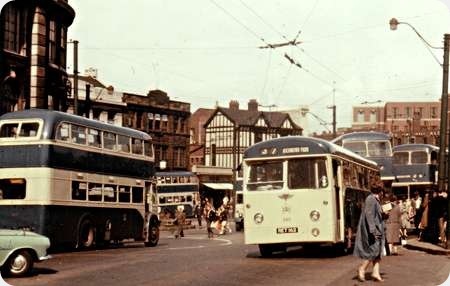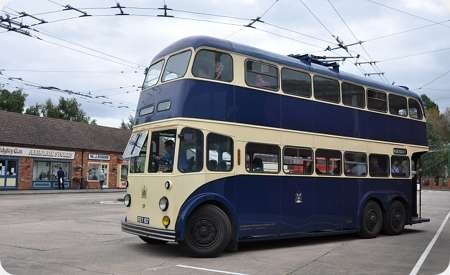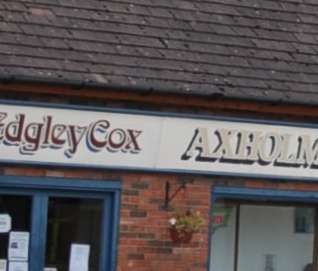Rotherham Corporation – Crossley DD42/7 – EET 891 – 191
Rotherham Corporation
1949
Crossley DD42/7
Crossley H30/26R
A dull overcast day in Rotherham in summer 1962, and the crew of corporation Crossley 191 appear to be abandoning their charge outside the Angel Hotel in Bridgegate and heading for the busman’s canteen at the back of the Municipal Offices in search of some hot tea. This initial batch of twelve Crossley-bodied Crossleys, 185-196, dating from 1949, were a staple on the short service 70 to the blast furnaces and rolling mills at Templeborough, or on the longer and even busier 69 service through to Sheffield, joint with Sheffield Corporation.
Behind is Park Royal-bodied AEC Bridgemaster 139 (VET 139), just a year old when this picture was taken. In an article in ‘Buses Illustrated’ in June of the previous year on the conversion of the Mexborough and Swinton trolleybuses to diesel buses, and which were operated in conjunction with Rotherham Corporation, the writer Terry Shaw commented that he’d always considered that Mexboro’s Brush-bodied Sunbeam single-deckers were ugly until he caught sight of one of these Rotherham Bridgemasters, five of which made up Rotherham’s contribution to the trolleybus conversion scheme. It’s not hard to see what he meant, as they literally were a ‘box on wheels’ Mexboro’ chose Leyland Atlanteans, almost equally as boxy but still one up on these ‘biscuit tin’ Bridgemasters.
Photograph and Copy contributed by Dave Careless
08/07/17 – 06:06
I agree the Park Royal Bridgemasters were truly appalling in appearance. The Rotherham livery application with a black mudguard on the nearside and a cream panel on the offside accentuates the asymmetrical front end. But then any livery application would have struggled to disguise this dog’s breakfast of a design. It makes the Crossley in front look sheer class!
Philip Halstead
09/07/17 – 06:32
Was Park Royal the only bodybuilder for the Bridgemaster? I@ve never come across any other body for them. And was it an integral vehicle, or did it have a chassis?
Chris Hebbron
09/07/17 – 06:33
Glad you agree, Philip. Even from the back the Park Royal body looked ugly and overly heavy, whereas the Crossley, with that outstanding emergency window, appeared very classy and well thought out.
A friend on Merseyside used to joke that Park Royal built the Bridgemaster bodies in one continuous line, and a set of shears simply came down every 30′-0" and chopped one off! Not all that hard to envision, really!
Dave Careless
10/07/17 – 07:36
The first few pre-production Bridgemasters were built at the Erwood Crossley factory and looked a good deal better. Nothing outlandish just the tidy rounded body typical of Crossley bodies of the late 50s, although by this time much influenced by Park Royal. Park Royal were very capable box makers in the late 50s and 60s! See the Crossley Story by Eyre, Heaps & Townsin. The Bridgemaster was integral, unlike the later Renown.
Andrew Gosling
10/07/17 – 07:36
The Bridgemaster was an integral vehicle, using (I understand) some of the same construction techniques as the Routemaster. So no other body make was available, which was part of its undoing.
There is a lot of misunderstanding about Bridgemaster bodies, along the lines that Crossley did it properly, whereas Park Royal made a mess of it. In fact the change of styling when production moved to Park Royal was coincidental. Crossley had developed the original body using the Park Royal styling features which were current at the time, but Park Royal’s double deck bodywork as a whole then took a nasty turn at the behest of BET management (who in the end didn’t place the orders to justify it).
It’s also true that the rear-entrance Park Royal Bridgemasters were not nearly as ugly as the front-entrance ones, and I don’t think this was just because of the entrance position. I’m almost convinced that they were completely different bodies.
Peter Williamson
10/07/17 – 07:37
To answer Chris the Bridgemaster was of integral construction using only the Park Royal body largely because AEC and Park Royal were in the same group of companies. The later Renown had a separate chassis and was bodied by other companies who generally made a much better job than Park Royal. The East Lancs bodies on Renowns for Leigh and West Bridgford showed what could be done to make a very attractive bus.
Philip Halstead
14/07/17 – 07:28
Thx Peter/Philip. I guessed that the Bridgemaster might have been integral, since only the Park Royal body ever appeared on them. And I agree that the rear entrance ones were the less unattractive of the two types and the Leigh/West Bridgford Renowns were a great improvement.
Both types passed me by, because my travels never took me to an area where they ran.
Chris Hebbron
14/07/17 – 16:18
If it hadn’t been invented by AEC/Park Royal, you might have thought the Bridgemaster was a deliberate attempt to wean us enthusiasts away from liking half-cabs.
Stephen Ford
15/07/17 – 06:48
The BET has a lot to answer for with the Bridgemaster design. The influence was felt on conventional half-cabs. Park Royal produced a very respectable half-cab e.g. Nottingham Regents and those built under the Crossley name were equally attractive, eg Stockport Titans (although several of these were actually finished by the Corporation). The production Bridgemaster was a worthy forerunner of the worst buses ever manufactured, Southampton’s PD2s (reach for hard hat)
Andrew Gosling
16/07/17 – 07:49
In 1948 Liverpool Corporation ordered 50 DD42/7 double deckers with Crossley bodywork to a revised design, being of four bay construction with a completely flat front (in plan view). Beauty is in the eye etc, but the result was very attractive in my opinion, and Rotherham Corporation must have felt the same, because all its Crossleys, the twelve in the 1949 batch, the further six bought in 1951 and the final six of 1952/3, had the Liverpool style of body (the very last true Crossley ever built was No.213, HET 513 of the final batch). Incidentally, the final batch of Crossleys is missing from Peter Gould’s Rotherham listing.
Turning to the Bridgemaster, the construction principle certainly owed much to the Routemaster insofar as it consisted of an integral body supported on front and rear subframes carrying the engine, gearbox and axle units, but the actual subframes differed significantly between the two models. Alan Townsin has remarked that it is surprising that little effort seems to have been made to achieve a degree of commonality between the components of the Routemaster and the Bridgemaster, even allowing for the fact that the latter was low floor design with a synchromesh gearbox option. The earliest Bridgemasters had RM style coil sprung rear suspension, but from 1958 air suspension became standard. The good looking body style by Crossley on the first five Bridgemasters had framing and other components in aluminium, as did the Routemaster, but, again, no attempt seems to have been made to use RM body components. Having taken the decision to close the Crossley works, AEC transferred body construction to Park Royal, where, at the behest of the BET, steel framing replaced aluminium, making the complete vehicle heavier than its market competitors. Park Royal came up with a stark body design that somehow exaggerated the flat panel beneath the driver’s windscreen that completely obscured the offside wing. The nearside wing remained exposed in the conventional manner which gave the already ugly duckling a curiously Nelsonian appearance when viewed from the front. Considerable subframe redesign was necessary to allow a front entrance to be accommodated, and the Park Royal body then became even more gaunt than before. Aesthetics was clearly not a strong point with Park Royal at that time, because the ungainly aspects of the Bridgemaster body were reflected in the firm’s products on other chassis, and faithful customers of long standing quickly took their business elsewhere.
Roger Cox
16/07/17 – 10:28
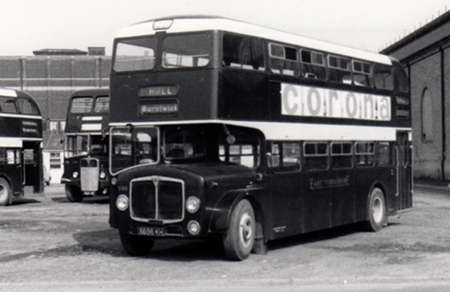
No.696 (of 1960) taken on 11 May 1967
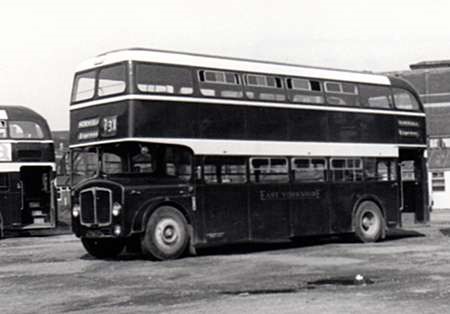
No 708 of 1961 also taken on 11 May 1967
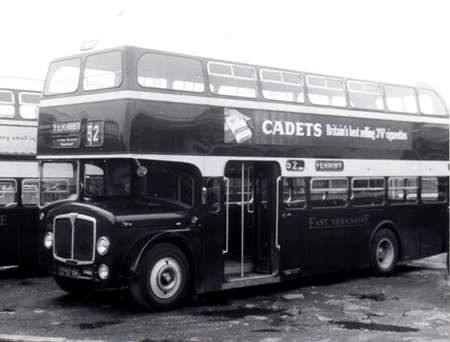
No.752 of 1963 taken on 30 July 1963.
After all the comments about Bridgemasters following the Rotherham Crossley article these pictures show that not all Bridgemasters were identical as shown by East Yorkshire’s first three batches of Bridgemasters. Note the doors on the rear entrance versions and the upper deck modified outline for Beverley Bar operations.
Malcolm J Wells
16/07/17 – 16:45
Yes, Malcolm. As I state above, the original Park Royal rear entrance bodies were built on an earlier form of the front subframe, which had to be redesigned to permit a front entrance body to be fitted. The frontal profile of the ensuing front entrance Park Royal body was even more ‘frowning’ than the earlier type.
Roger Cox
Quick links to the - Comments Page - Contact Page - Home Page
